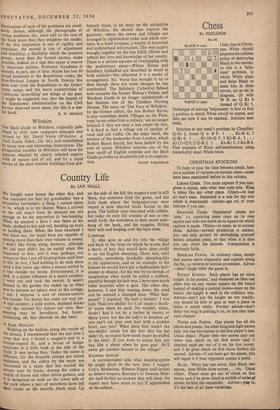American Parties
NomiNo puzzles the British spectator of the American political scene more than the party system, so irrational, complicated, slow-mov- ing, decentralised,, in short un-British and so wrong. Nevertheless, the American system works, and attempts to recast it in the shape of the British system always fail. In his useful, lucid and well-planned book, The 7'wo-Party System in the United States (D. Van Nostrand Co. Inc.: Macmillan, 45s.), Professor William Goodman makes plain why and how the parties work, the limitations of third parties, the function of the two major parties. His
Illustrations of each of his problems are excel- lently chosen, although the photographs of voting machines, etc., must add to the cost of the book more than they enlighten the reader. If the first impression is one of rigidity and emptiness, the second is one of adjustment and flexibility, a flexibility which the pressure groups, more than the formal parties, make possible. Indeed, as a sign that eppur si muove in American politics, Professor Goodman is already, in part, out of date. Maine has lost its Proud eminence in the Republican ranks; the Non-Partisan League in North Dakota has gone over from the Republican to the Demo- cratic camp; and the worst eccentricities of California 'cross-filing' are things of the past. It might be suggested, too, that the impact of the Eisenhower administration on the Civil Service deserved more space, but this is a use-



































 Previous page
Previous page